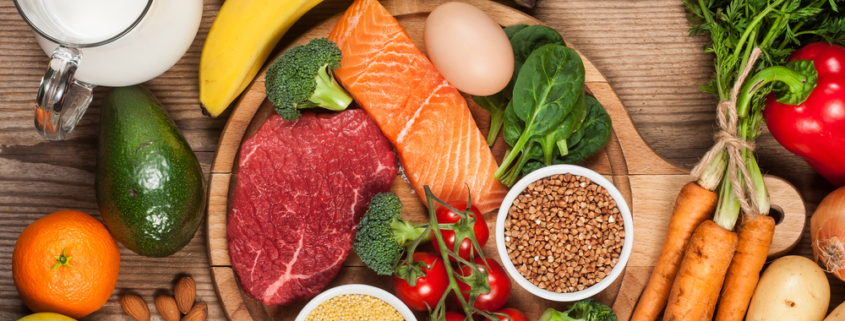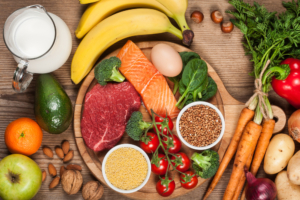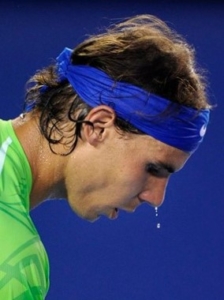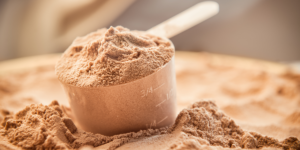Nailing the Basics – Nutrition for the Youth Athlete
Nailing the basics: Youth athlete nutrition
Young athlete nutrition is vital due to the sheer volume of work they may be exposed to. Some young athletes take part in numerous training sessions and games per week as a result of school and external club sports. Additionally, growth and maturation add in another energy demand. I was doing talk at a strength and conditioning seminar, with high school athletes, and I asked a question to the group, “How many calories a day do you think you need to consume?” I was inundated with blank faces until someone put up their hand and replied “1000 calories”… The reason I wanted to write about this topic is to give the reader a chance to learn the basics when it comes to youth athlete nutrition and perhaps, if you are a parent, this will encourage you to do further reading around this important topic. The topics I want to cover today are:
- Why should a youth athlete focus on their energy consumption?
- What types of foods should an athlete be consuming?
- My views on supplementation in this population
- Fluids and hydration?
- My Practical recommendations
Why should a youth athlete focus on their energy consumption?
Normally, my favourite answer to this question is “What will happen if you place the wrong type/amount of fuel in your car?” you probably will not get very far. The point here is that the amount and type of nutrition is essential for the average athlete, participating in the numerous activities in a week. Research has pointed out that the balance between energy expenditure and intake is crucial to prevent energy deficit or excess (Purcell, 2013). In other words, it is important to get the balance between input and output in order to avoid the negative effects of excess body fat accumulation or on the other side of the spectrum, fatigue or injury due to insufficient calorie intake.
Also, the unique challenges youth athletes face with growth and maturation also pose another dimension. During accelerated periods of growth extra calories are needed to replenish the energy expended during athletic activities (Litt A, 2004).
What types of foods should youth athletes be consuming?
Before we dive into what types of foods our young athletes should consume, I thought it would be useful to give you a brief background on the macro and micronutrients.
Carbohydrates
Despite the negative press they seem to get in the fitness world, carbohydrates are a vital fuel source for athletes as they provide glucose. This glucose is used for energy and is stored as glycogen in muscles and the liver. Carbohydrates are a primary fuel source due to how quickly they can be released compared to other energy sources (Hoch, 2008). Research has suggested that carbohydrates should make up the majority of a diet, for 4-18 year olds (45-65%) (Otten, 2006). Useful sources of carbohydrate include wholegrains, vegetables and fruits.
Protein
Proteins builds and repairs muscles, hair nails and skin. Protein are organic molecules made up of amino acids, these amino acids can be subdivided into ‘essential’ and ‘non-essential amino acids. Non-essential amino acids are produced within the body. Protein has many functions in the human body but to name a few, it is needed to coordinate cell activity, transport various substances around the body, defending the immune system and aids in the growth and repair of the muscle cells. Ideally, athletes will want to remain in positive protein balance throughout the day in order to maximise protein synthesis. Finally, there are reported benefits of consuming protein with carbohydrates to enhance recovery. Lean sources of protein include poultry, fish and eggs.
? Download a FREE Nutrition Guide ?
Click Here
Fats
Fat is important for a number of reasons including absorption of fat soluble vitamins (A, D, E, K) insulation, and protection of vital organs. Healthy fats can increase levels of satiety, it is an energy dense source of energy (1 gram provides 9 calories) but unlike carbohydrates it is harder to use (Purcell, 2013). It is suggested that saturated fats should compromise no more than 10% of total energy intake (Meyer, 2007). Good sources of fat come from food sources such as oily fish, nuts and seeds. Whilst it is probably tempting to read this section and stock up on oven chips, sweets and cakes these sources of fat should be minimised.
Micronutrients
There are a multitude of vitamins and minerals that can be discussed but to keep this blog from becoming a dissertation, the main micronutrients I want to discuss for youth athletes are Calcium, Vitamin D and Iron.
Calcium is important for bone health, normal enzyme activity and muscle contraction (Purcell, 2013). It can be found in foods and beverages such as milk, yoghurt, spinach & cheese. In Britain we can all assent that sunshine is not a regular occurrence (it is also a leading topic of conversation in the UK) particularly in the winter periods. Vitamin D deficiency is actually quite common (approximately 30-40% of general population amongst all age groups) with factors such as location, skin colour, lifestyle and weather all affecting serum Vitamin D levels (More, 2020).
Vitamin D is particularly important for youth with regard to bone development and immunity. Additionally, sufficient levels of vitamin D are needed for the uptake and absorption of calcium (Purcell, 2013). Vitamin D can be sourced from fortified foods, milk and sun exposure. In some cases, Vitamin D is be supplemented in high doses when blood tests show a large deficiency. Lastly, the next micronutrient that is going to be discussed briefly is Iron. During adolescence iron is needed to support growth, increases in blood volume and lean muscle mass (Hoch, 2008). Iron deficiencies typically stem from a diets lacking in poultry, meat or fish. Additional factors include iron lost in sweat and menstrual blood (Winter, 2000). Therefore, some authors suggest that female athletes, long distance runners and vegetarians should be periodically screened for iron deficiencies (Winter, 2000). Iron dense foods include green leafy vegetables, fortified cereals, eggs and lean meat.
Fluids
Athletes who train and compete, particularly in hot environments will experience significant levels of sweat and subsequent fluid loss. Large levels of dehydration not only reduces performance but it could place young athletes at risk of heat exhaustion (Rowland, 2011). Moreover, the role of fluid balance is vital with regards to maintaining optimal fluid levels and regulating body temperature. How much fluid an athlete will need will depend on a number of factors such as body mass, age (Rowland, 2011) and individual sweat rates. As well as the fluid lost through sweat, we also know that a degree of electrolytes are lost too, particularly sodium. Appropriate levels of sodium are needed to stimulate thirst and contribute towards fluid retention (Hoch, 2008). So whilst it is important to make sure children are suitably hydrated, we also want them to consume drinks with added electrolytes particularly for events lasting longer than 60 minutes (Rowland, 2011).
My views on supplements?
Supplements can be a great addition to our nutritional needs. However, I want us to revert to the title ‘Nail the basics’. Supplements are there to support a healthy diet, not replace it. I get a lot of questions from my athletes regarding, what the best protein powder is. My answer is always as follows ‘a sturdy house is never built on shaky foundations’ ironically this is what a PE teacher had once told me back in high school, regarding the same issue. Nail the basics,
Make sure your diet has the correct macro and micronutrients, make sure you are hydrated! With this piece of knowledge I want to give you some practical recommendations
Practical recommendations
Before you read this section, I want to share that these are very general recommendations. Each individual will have unique requirements but I hope this will give you some basic principles around youth athlete nutrition.
- Ensure the young athlete has 3 main meals a day with nutritious snacks in between.
- Meals should include a healthy balance of carbohydrates fats, and proteins.
- Carbohydrates should be present in all meals, with starchy carbohydrates such as rice, potatoes and pasta throughout the day, and a focus on consuming carbohydrates from vegetables during the evening.
- Timing of training/competitions will dictate what food you will consume throughout the day. The closer the athlete is to competition, the more focus should be on easily absorbed, higher glycaemic carbohydrates.
- Protein consumption is vital for a developing athlete therefore it should be consumed throughout the day, with special attention post training. Players should look to consume protein within 30-60 minutes post training.
- Protein consumed with carbohydrates improves recovery, therefore individuals should look to consume these together. How much protein and carbohydrate will depend on the intensity and duration of the training session and could range anywhere between 20-25g and 30-100g respectively.
- Consume 5-10 portion of fruit and vegetables per day. A good rule of thumb: The wider the variety of colours the increased variety of vitamins and minerals.
- Ensure your players carry a water bottle, drinking little and often.
- If a sporting event lasts more than 60 mins consider consuming drinks with added electrolytes, particularly if they are heavy sweaters.
- Urine colour is a fast effective gauge of hydration levels and should be pale/clear colour. If urine is a yellow/dark colour it is a good indication of dehydration.
As with training, consistency is key. However, it doesn’t have to be dull either. After all, they are kids so the odd piece of chocolate is not going to do harm. Additionally getting creative/learning to cook with different recipes may also be great for their development! The point of this article was to give the reader the fundamentals around nutrition to keep their growing youngsters healthy. I want to further reiterate that these are just generic guidelines and those needing specialist advice should go and seek a registered nutritionist.
Thanks for reading guys, nail the basics.
Konrad McKenzie
Strength and Conditioning coach.
Follow Konrad: @konrad_mcken
Follow Daz: @apacoachdaz
References:
- Dietitians of Canada, the American Dietetic Association, and the American College of Sports Medicine Joint position statement: Nutrition and athletic performance. Can J Diet Pract Res. 2000;61(14):176–92
- Hoch AZ, Goossen K, Kretschmer TPhys Med Rehabil Clin N Am. 2008 May; 19(2):373-98,J Sports Sci. 2007; 25 Suppl 1():S73-82.
- Litt A. Fuel for young athletes: Essential foods and fluids for future champions.Windsor: Human Kinetics; 2004.
- Meyer F, O’Connor H, Shirreffs SM, International Association of Athletics Federations.
- More, J., 2020. Prevention Of Vitamin D Deficiency | BJFM. [online] BJFM. Available at: <https://www.bjfm.co.uk/prevention-of-vitamin-d-deficiency> [Accessed 17 June 2020].
- Otten JJ, Hellwig JP, Meyers LD, editors. Dietary reference intakes: The essential guide to nutrient requirements.National Academies Press; 2006.
- Rowland, T., 2011. Fluid Replacement Requirements for Child Athletes. Sports Medicine, 41(4), pp.279-288.
- If you’re not subscribed yet, click here to get free email updates, so we can stay in touch.
- Share this post using the buttons on the top and bottom of the post. As one of this blog’s first readers, I’m not just hoping you’ll tell your friends about it. I’m counting on it.
- Leave a comment, telling me where you’re struggling and how I can help
Since you’re here…
…we have a small favor to ask. APA aim to bring you compelling content from the world of sports science and coaching. We are devoted to making athletes fitter, faster and stronger so they can excel in sport. Please take a moment to share the articles on social media, engage the authors with questions and comments below, and link to articles when appropriate if you have a blog or participate on forums of related topics. — APA TEAM






